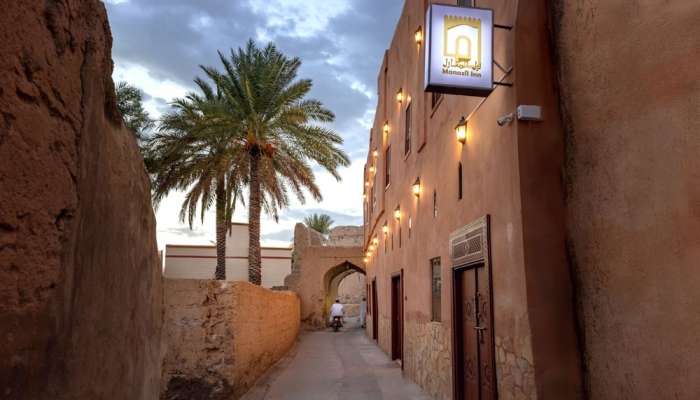Muscat: Creative and cultural industries play a vital role in supporting the global knowledge and innovation economy, with their contributions growing significantly alongside each phase of the industrial revolution and technological advancement.
These industries serve as a fundamental source of value addition to the gross domestic product (GDP), while diversifying national income streams and enhancing financial sustainability.
The Sultanate of Oman places increasing emphasis on strengthening the role of culture, heritage, and arts as key pillars of national development. One of the objectives under the "Citizenship, Identity, National Heritage, and Culture" priority in Oman Vision 2040 highlights the need for sustainable investment in heritage, culture, and the arts to contribute to national economic growth and diversification.
Dr. Salim Mohammed Al Hinai, Assistant Professor at the College of Arts and Sciences at the University of Nizwa, stated in a comment to Oman News Agency (ONA): "Creative industries, within the local and national context, are defined as a set of sectors reliant on innovation and individual talent, transforming ideas into economically viable products and services. These industries encompass traditional crafts, visual arts, literature and publishing, music, cinema, design, and digital media."
He added: "Significant progress has been made in the production of Omani daggers, silver jewelry, and traditional textiles, particularly in Nizwa and Sohar. In graphic design and digital content production, there is a notable trend on social media platforms, along with advancements in Omani cinema, yielding both local and international results. Culturally, events such as the Muscat International Book Fair and the Muscat International Film Festival highlight the sector’s vitality in reinforcing Omani identity through national and local culture and economy."
He emphasized that creative industries play an increasingly important role in revitalizing various aspects of Oman’s economy and promoting alternative, sustainable models. This, he said, helps generate creative employment opportunities for Omani youth in design, traditional crafts, and digital content, serving as an alternative to reliance on traditional sectors.
He explained that these industries enhance cultural tourism by linking authentic Omani heritage with modern products and industries. They also unlock potential in the digital economy through e-platforms for local and global marketing. Additionally, they provide high added value at relatively low investment costs, fostering international partnerships that showcase Omani culture worldwide.
As for the role of small and medium enterprises (SMEs) in supporting creative industries as a key tributary of the knowledge economy, Badriya Mohammed Al Foori, Director of the Entrepreneurship Department at the SME Development Authority (Riyada) told ONA: "The Riyada program places great emphasis on strengthening the creative industries ecosystem as an economic and cultural driver that reinforces national identity and enhances Oman’s soft power."
She added that Riyada empowers creative thinkers and innovators through integrated programs, including specialized training, technical mentorship, incubation initiatives, and financial facilitation. It also provides a stimulating business environment that transforms creative ideas into sustainable projects through specialized entrepreneurship centers in creative industries.
She noted that Riyada builds strategic partnerships with cultural, educational, and community institutions to optimize investment in Omani intellectual heritage and produce contemporary cultural content. She stressed that creative industries present a promising opportunity for income generation, job creation, and enhanced competitiveness—provided they receive the right legislative and institutional framework and a skilled national workforce to lead this vital sector.
On his turn, Murtadha Abdulkhaliq Al Lawati, Director General of the Museum of Place and People, stated that Omani traditional industries embody a rich civilizational legacy rooted in daily human needs and refined by the innate craftsmanship of Omani artisans, renowned for their creativity and precision. He noted that these industries transcend functionality to become a visual and cultural expression reflecting the beauty of Omani life and showcasing national identity in its finest form.
He added that these industries receive widespread attention for their artistic and intellectual value across eras, contributing to the transmission of cultural heritage to future generations while preserving the creative spirit unique to Omanis.
He mentioned that traditional crafts have captivated global audiences due to their meticulous craftsmanship, expressive richness, and profound civilizational message, standing as a living testament to the success of Omani industries in cementing their global presence.
Speaking on the development of traditional industries, he emphasized in a statement to ONA that innovation should not erase the essence of any local craft. Omani creativity is deeply rooted in artistic and cultural identity and cannot be separated from the expressive and visual context that defines these industries.
He noted that traditional arts are a key driver of cultural tourism and should be nurtured while preserving their essence without altering their original uses, maintaining their civilizational, economic, and sentimental value for Oman and the world.
Meanwhile, Khalid Sulaiman Ambosaidi, owner of Manazil Inn in Nizwa’s Al-Aqr neighborhood, told ONA: "The Manazil Inn project preserves Omani cultural heritage without altering any element, requiring no restoration. It highlights the site’s true symbolic value using heritage materials and colors inspired by traditional Omani architecture, with windows and doors designed in classic wooden styles."
He added that such creative projects extend beyond domestic impact, shaping a positive global image of Oman as a nation that cherishes its heritage and employs creative industries to showcase national identity.
He affirmed that meticulous restoration and authentic cultural tourism experiences reflect the ability of creative industries to bridge past and present while fostering cultural awareness and belonging among both locals and visitors.
On mechanisms for developing creative industries amid rapid digital transformation, he stressed the need for specialists in restoring and preserving heritage houses, ensuring their features vividly narrate Oman’s historical life.
He noted that boosting creative industries in the digital age requires collaborative institutional and societal efforts to leverage modern technologies in documentation and promotion, preserving national heritage as a sustainable cultural and economic resource.
